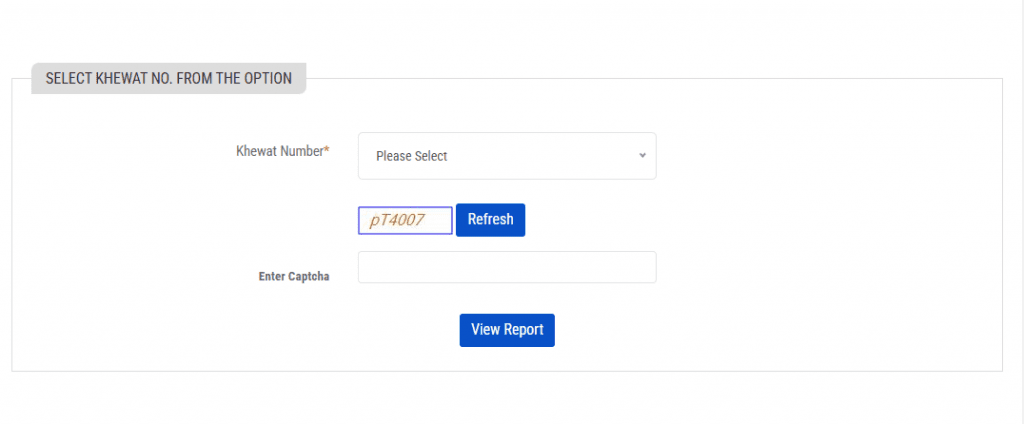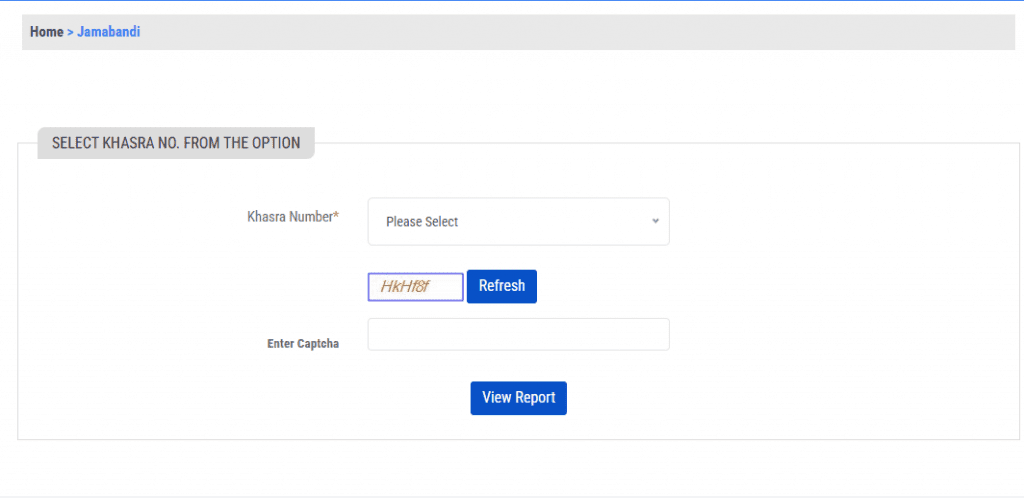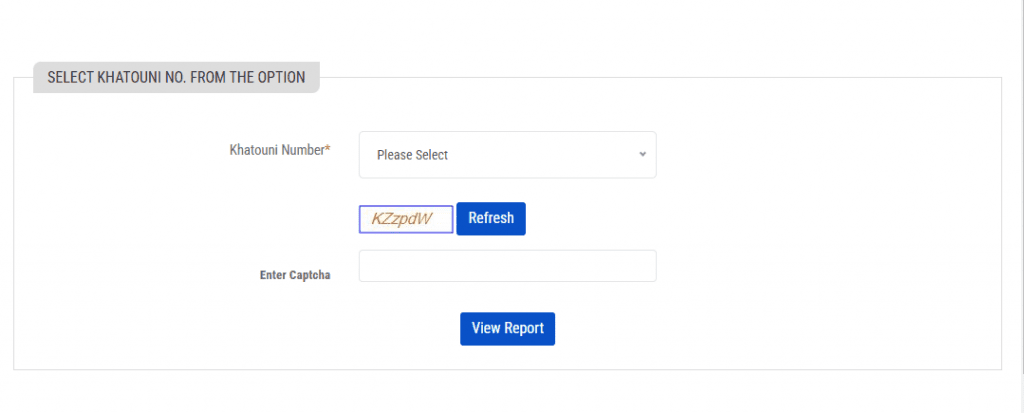The Jamabandi Punjab portal is an official online platform launched by the Punjab government to help people access their land records easily. The term “Jamabandi” refers to land records.
Through this portal, landowners in Punjab can view and manage their land records, including vital documents like Jamabandi, Mutation, Rojnamcha, and more. It also provides services like verifying cadastral maps (plot maps) and requesting FARD (land ownership certificates).
What is PLRS Fard Jamabandi Punjab?
PLRS Fard, also known simply as Jamabandi, is the official land-ownership record maintained by the Punjab government. It serves as the definitive proof of:
- Khatauni (Account) Details
- Khasra (Plot) Numbers
- Ownership Status
- Land Classification (e.g., agricultural, non-agricultural)
Traditional Workflow
- Physical Custody: The seller retained the paper “Fard” document.
- Verification by Patwari: Any change of ownership or mutation required a Patwari’s on-site inspection.
- Manual Updates: Patwaris relayed amendments to the Revenue Department—often resulting in delays, transcription errors, and disputes.
Digital Transformation under PLRS
To streamline land-record management, the Punjab Housing & Urban Development Department, via the Punjab Land Records Society (PLRS), has:
- Digitized All Fard/Jamabandi Records
- Integrated Patwari, Tehsildar & Revenue-Office Workflows
- Enabled Online Access for landowners, surveyors, and financial institutions
How to Check Punjab Land Records by Name?
- Visit the official Punjab Land Records (PLRS) website

- Choose a search method: Owner Name, Khewat Number, Khasra Number, or Khatouni Number.

- Provide District, Tehsil, Village, and Year details, then click “Set Region.”

- When searching by owner’s name, type it in English or Punjabi and select “View Owner Relation” to see the Jamabandi information.
How to Jamabandi Punjab Land Records by Khewat No./ Khasra No./ Khatouni No. Wise?
- Visit the Jamabandi Punjab site and look for the “Jamabandi” option on the right.

- Search by Khewat Number: On the same site, choose “Khewat Number Wise,” pick the Khewat number, and click “View Report.”

- Search by Khasra Number: Specify your district, tehsil, village, and year. Under “Jamabandi,” select “Khasra Number Wise,” enter the Khasra number, and click “View Report.”

- Search by Khatauni Number: Go to the Punjab Land Record portal, select your district, tehsil, village, and year, then view the results under “Khatauni Number Wise.”

How to Correct Punjab Land Records?
- Visit the Punjab Land Records Official Portal https://jamabandi.punjab.gov.in/Default.aspx.
- On the homepage, you’ll be prompted to choose your village, tehsil, year, and district.
- Once filled, click on “Set Region” to proceed.
- Select the ‘Correction Record’ Tab
- After setting your region, look at the menu options toward the bottom right of the portal.
- Click on “Correction record” to open the form for filing your request.
- In the new window, fill in details such as your name, mobile number, district, email ID, and any other relevant information.
- Click on the “Submit” button to file your correction request.
Check Out: RERA Charges in Punjab
How to Verify Nakal Documents on the Jamabandi Punjab Portal?
You can verify Nakal (land record documents) online through the Jamabandi Punjab portal by following these steps:
- Login to the Portal: Go to https://jamabandi.punjab.gov.in/.
- Select Nakal Verification: Click on the ‘Nakal Verification’ tab on the left side of the portal.
- Enter Details: A page will appear where you need to provide information like District, Tehsil, and dates.
- Verify Nakal: After entering the details, click on the Verify Nakal button. The Nakal verification document will be displayed.
Read More: Stamp Duty and Registration Charges in Punjab
How to Access the Cadastral Map of an Area?
The Jamabandi Punjab portal also allows you to view cadastral maps of areas. To do so:
- Login to the Portal: Access the portal using your credentials.
- Select ‘Cadastral Map’: Click on the ‘Cadastral Map’ option on the left-hand side.
- Enter Region Details: Select District, Tehsil, and Village from the drop-down menus.
- View the Map: The cadastral map for the selected village will be displayed in a detailed format, showing land plots and boundaries.
How to Check the Status of Mutations on the Jamabandi Punjab Portal?
The Jamabandi Punjab portal provides users with the ability to check the status of land mutations online. To do so, follow the steps below:
- Visit the Official Portal: Go to the official Punjab Land Records website.
- Select the Mutation Status Option: On the homepage, click on the “Dashboard-Status of Mutations” option.
- Choose Your District: A new page will appear. Select the appropriate District from the dropdown list.
- View the Mutation Status: The mutation status for your selected district will be displayed on the screen.
Check Out: Pros and Cons of Digital Land Records
How to Check Mutation Status After Registry?
You can also check the mutation status after a registry has been completed. Here’s how:
- Visit the Official Website: Go to the Punjab Land Records Portal.
- Click on Mutation After Registry: On the left-hand menu, click on the ‘Mutation after Registry’ option.
- Enter the Required Details: Fill in the relevant details, such as Vaseeka Number or Mutation Number. If you choose the Vaseeka Number option, you will need to provide District, Tehsil, Vaseeka Date, Vaseeka Number, and the Captcha Code. If you choose Mutation Number wise, you will need to fill in District, Tehsil, Village, Mutation Number, and the Captcha Code.
- Search the Mutation Status: Once the details are filled in, click the Search button. The mutation status will be displayed on the screen.
Read More: Loans Against Agricultural Land
How to Check Roznamcha on Jamabandi Punjab Portal
The Roznamcha (daily register of transactions) can also be checked online through the Jamabandi portal. Follow these steps to access Roznamcha records:
- Login to the Portal: Visit the official Punjab Land Records Portal.
- Select the Roznamcha Option: Click on the ‘Roznamcha’ option in the left-hand menu.
- Choose the Type of Roznamcha: You can choose to view Roznamcha either by Rapat Number or Waqiati Number. Select the appropriate option.
- Fill in Required Details: Enter details such as District, Tehsil, Village, and Year, and then click on ‘Set Region’.
- Click on Roznamcha: After selecting the region, click on Roznamcha to view the record.
- Enter Rapat or Waqiati Number: Enter the Rapat or Waqiati Number details to view the Roznamcha information.
Read More: How to Pay Property Tax Online?
How to Check Pending Court Cases on Jamabandi Punjab Portal
To avoid fraudulent property transactions, you can check whether there are any pending court cases related to a property on the Jamabandi portal.
- Visit the Official Portal: Go to the official Jamabandi Punjab website.
- Select Court Case Option: On the homepage, click on the ‘Court Case’ option in the left-hand menu.
- Enter Required Details: Fill in the details like District, Tehsil, Village, Khasra Number, and Khewat Number.
- Search for Court Cases: Click Search to view the list of active court cases related to the selected property.
How to Check Property Tax Register on Jamabandi Punjab Portal
The Property Tax Register for properties in Punjab can also be accessed on the Jamabandi Punjab portal.
- Visit the Official Portal: Go to Jamabandi Punjab.
- Select Property Tax Register: On the left-hand menu, click on the ‘Property Tax Register’ tab.
- Choose the Location: Select the district name from the drop-down list (e.g., Amritsar, Ludhiana, Patiala, etc.).
- Enter Property ID: Provide the Property ID or Registration Number to check the property tax record.
How to Check the Registry Deed on the Punjab Land Records Portal
You can also check the details of a registry deed on the Jamabandi Punjab portal. Here’s how:
- Go to the Official Website: Visit the official Punjab Land Records Portal.
- Click on Registry Deed: On the homepage, click the ‘Registry Deed’ tab.
- Select Search Criteria: You can search for the Registry Deed by Khewat Number, Registration Number, Registration Date, or Buyer/Seller Name.
- Enter Details and Search: Fill in the required information and click on Search. The details of the Registry Deed will be displayed on the screen.
How to Submit Feedback on the Punjab Land Record Website
You can submit feedback about the portal or services through the official website.
- Visit the Official Website: Go to the Punjab Land Records Portal.
- Click on Feedback: On the homepage, click the ‘Feedback’ option in the left-hand menu.
- Fill in Feedback Form: Enter your Name, Email, Mobile Number, District, Tehsil, Village, and your Feedback.
- Submit Feedback: After entering all the details, click the Submit button to send your feedback.
Read More: Can You Build a House on Agricultural Loan?
How to Check Daily Land Transaction Details on Jamabandi Punjab Portal
You can find daily land transaction details on the Jamabandi portal.
- Visit the Portal: Go to the official Jamabandi Punjab website.
- Select Region and Rapat Details: Click on ‘Set Region’, then choose the Year, Rapat Type, and Rapat Number.
- Choose Rapat Type: Select either ‘Rapat No. Wise’ or ‘Waqiati No. Wise’ to proceed.
- View Transaction Details: Once you fill in the details and enter the Captcha code, the land transaction details will be displayed.
Conclusion
In conclusion, the Jamabandi Punjab portal is a powerful tool for accessing various land records and checking the status of property transactions in Punjab. By following the steps outlined above, you can easily verify mutation statuses, check Roznamcha for land transactions, review property tax details, and ensure there are no pending court cases related to your property.
Frequently Asked Question
The Jamabandi Punjab portal is an official online platform that provides access to land records, mutation statuses, Roznamcha, and other property-related information in Punjab.
You can check the mutation status by visiting the portal, selecting the “Status of Mutations” option, choosing your district, and reviewing the displayed details.
To check Roznamcha, visit the portal, click on “Roznamcha,” select either Rapat or Waqiati Number, and fill in the required district and year details.
Yes, there is a mobile app called “Punjab Land Records – PLRS Jamabandi” available on Playstore to check land records, mutation status, and other services.
You can check the Registry Deed by searching using criteria like Khewat Number, Registration Number, or Buyer/Seller Name on the portal.

 HDFC Home Loan
HDFC Home Loan SBI Home Loan
SBI Home Loan
